Bicornes, bonnets & boaters
Everyone needs a hat for some occasion. There’s quite a variety of headwear across the collections including a convict cap from Hyde Park Barracks; a bonnet from Vaucluse House; a Mounted Police cap from the Justice & Police Museum; a straw boater from Rouse Hill Estate; and a top hat from Meroogal. These hats, and others in the collection, range in date from early to late nineteenth century.
Asylum woman’s bonnet Bessie Rouse’s bonnet Convict cap Edward Battye’s Mounted Police cap Elizabeth Macarthur’s sunbonnet Kathleen’s straw boater Robert Taylor Thorburn’s silk hat The Fedora The Heritage family bonnet William Wentworth’s bicorne
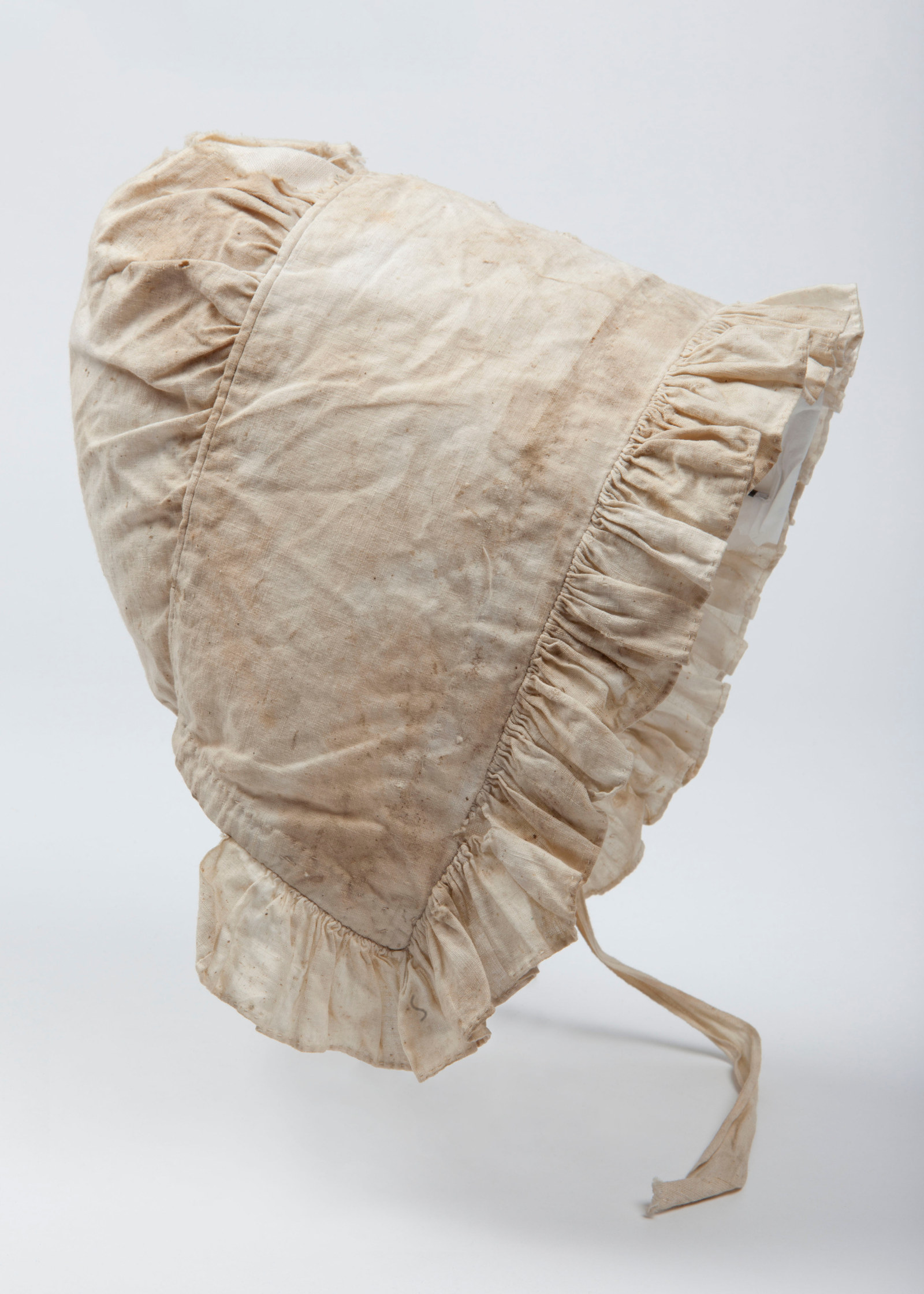
Asylum woman’s bonnet
Was it a necessity, fashion accessory, or uniform? Excavated from beneath the floorboards of the northern dormitory on level 3 of Hyde Park Barracks, this simple cotton bonnet bears the black ‘HPA’ stamp and broad arrow (indicating government property) of the Hyde Park Asylum. Home to hundreds of frail, aged and destitute women, the Hyde Park Asylum occupied the top floor of the Hyde Park Barracks from 1862 until 1886. The women of the Asylum were supplied with ‘a complete change of suitable clothing, upon entrance, if required’, including bonnets such as this. Along with masses of other textile pieces, newspaper scraps, and the occasional treasured object, this bonnet somehow found its way under the floor near the door to the corridor at the eastern end of the room. Perhaps the bonnet was left lying on the ground one evening by an inmate of the asylum, and one of the dormitory rats pulled it down below the floorboards to use for a nest?
Bessie Rouse’s bonnet
This stylish olive green silk velvet bonnet belonged to Bessie Rouse, nee Buchanan (1843-1924), the very attractive and fashionable mistress of Rouse Hill House from her marriage in 1874 to Edwin Stephen Rouse (1849-1931) until her death in 1924. The bonnet is elaborately trimmed with beads, gold braid, sequins and artificial pearls and has two silk ribbons draping from the back. Bessie is thought to have had it made by a milliner to wear at her daughter Nina's marriage to George Terry in 1895. The bonnet is constructed with a wire frame and would most probably have been kept in place with one of Bessie’s many elegant hatpins. We know that she was proud of her beautiful red-gold hair and this style of bonnet would have revealed it very nicely whenever she wore it. She may have continued wearing the style well beyond its vogue. This is an important Australian example of professional millinery of the late 19th century.
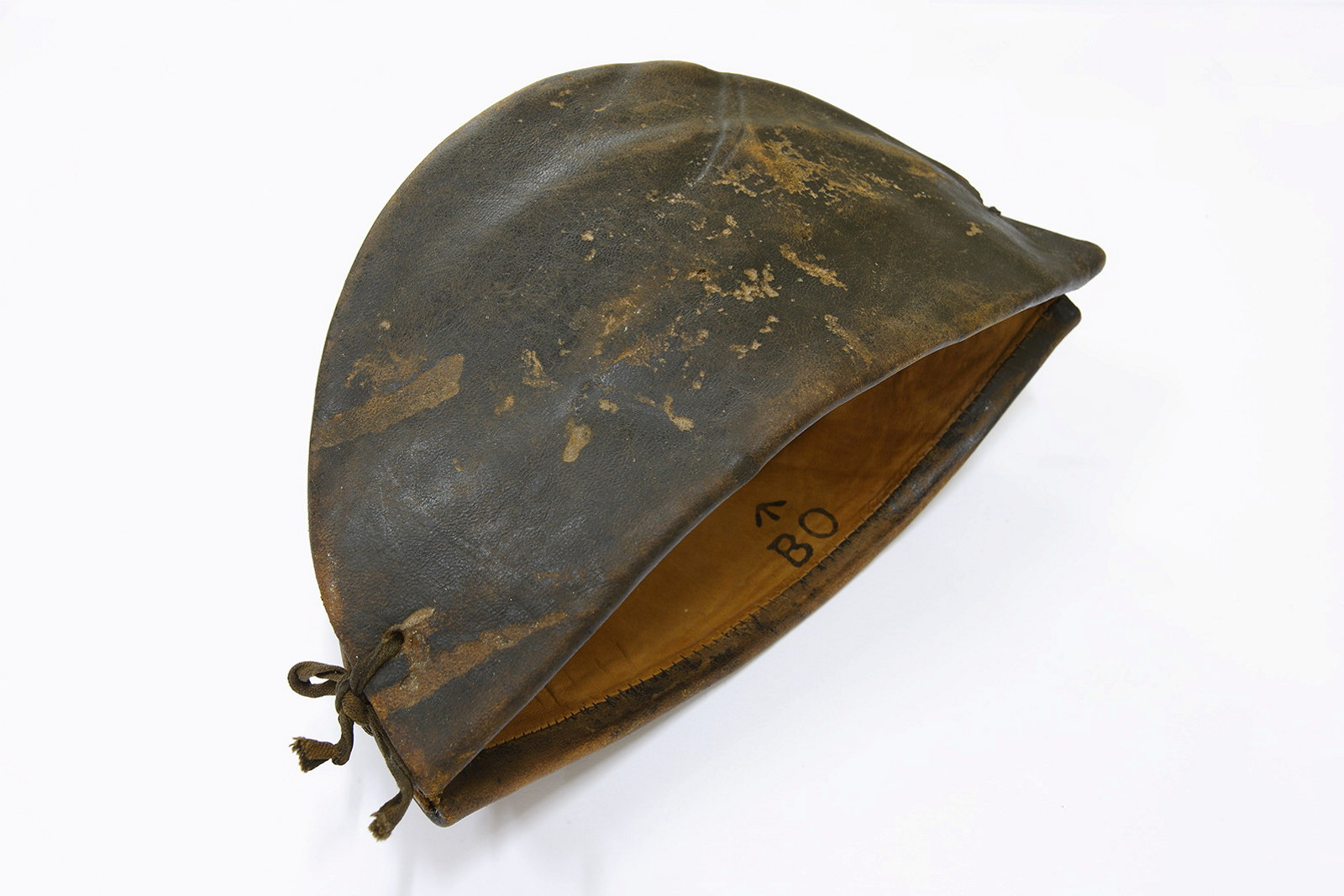
Convict cap
Along with the cat-o’-nine tails and leg irons, the leather convict cap is one of the most recognizable symbols of convictism in Australia. Folded double and secured into position with tied tapes near the base, the cap had a brim on either side that could be turned down to protect the wearer from both sun and rain. But it didn’t always meet with convict approval. in 1819 Major George Druitt of the 48th Regiment of Foot told Commissioner John Thomas Bigge that they were ‘quite useless, and afford no protection to the head from the sun’. Convicts were said to prefer woollen caps in winter and broad brimmed straw hats in summer and resorted to stealing them when they could not be acquired by other means. Hat theft came with harsh consequences: in 1833 Irishman Robert Reilly received a flogging of 25 lashes at Hyde Park Barracks for stealing a hat from another prisoner; Yorkshireman John Harty received 6 months in leg irons for the same crime. Despite being impractical and unpopular, the leather caps remained part of the convict uniform at least into the 1850s.
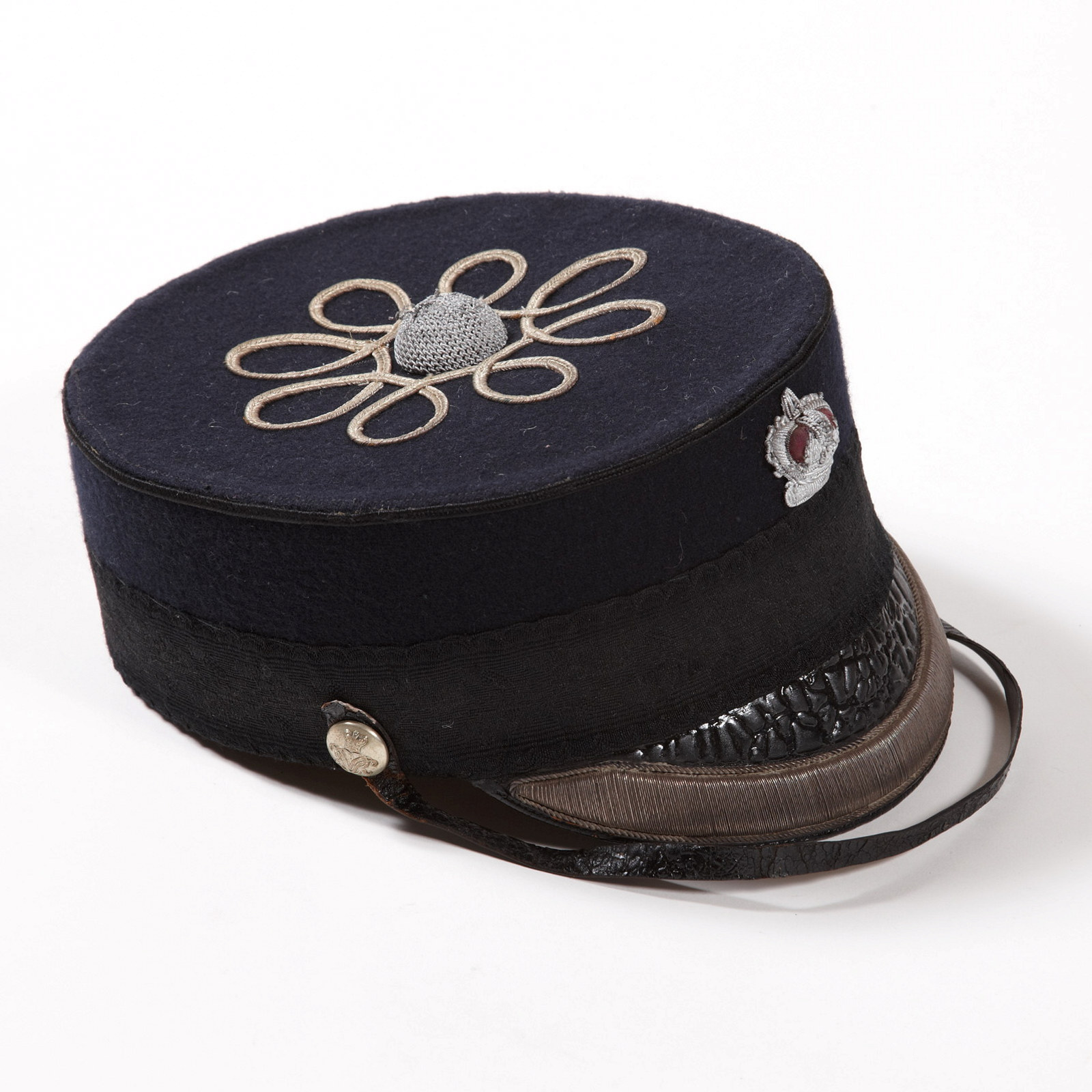
Edward Battye’s Mounted Police cap
This braided pill-box style cap was part of the uniform issued to Edward Montague Battye (1817-1898) as an officer of the New South Wales Mounted Police. The cap is lined with satin and carries the manufacturer's label "FAYREFIELD / FINEST FUR FELT". Battye came to NSW in 1848 as aide-de-camp to his uncle Major-General Edward Wynyard. He had begun his working life as a page in the royal household of Queen Adelaide and later served as an officer in the British Army in Canada. He joined the NSW police in 1851 and earned a reputation as a ‘noted thief catcher’. He was known as a brave and tenacious hunter of bushrangers and was popular with the men he commanded in the Western Region Mounted Police and Gold Escort. He was forced to leave the police in 1861 after irregularities were discovered in his police accounts but was re- employed in 1862 in response to public pressure. Colonial newspapers reported that he was “a terror to evil doers in the Western district” and that since his removal the country had been “a prey to unchecked violence”. Battye remained in the police until his retirement in 1893.
Elizabeth Macarthur’s sunbonnet
This early Victorian sunbonnet is believed to have belonged to Elizabeth Macarthur (1766-1850), mistress of Elizabeth Farm near Parramatta and a pioneer of the Australian wool industry. Elizabeth, who was born in Devon, England, came to Australia in 1790 with the Second Fleet as the wife of Lieutenant John Macarthur of the New South Wales Corps. John Macarthur became a large landholder with great pastoral ambitions. He was also a turbulent figure in colonial politics and spent long periods in exile from the colony. Throughout her husband’s absences Elizabeth Macarthur was left with her younger children to manage his agricultural and grazing concerns and his complex trading ventures. She maintained Elizabeth Farm as her home until her death, living in her later years a retired life centred on her family and the delights of her garden. This sunbonnet dates from those late years. It is made from unbleached linen, drawn over a series of 25 whalebone hoops, supported by 5 radiating stays and with a brim reinforced with wire. A handmade replica of the bonnet is used at Elizabeth Farm for education programmes and in house presentation.
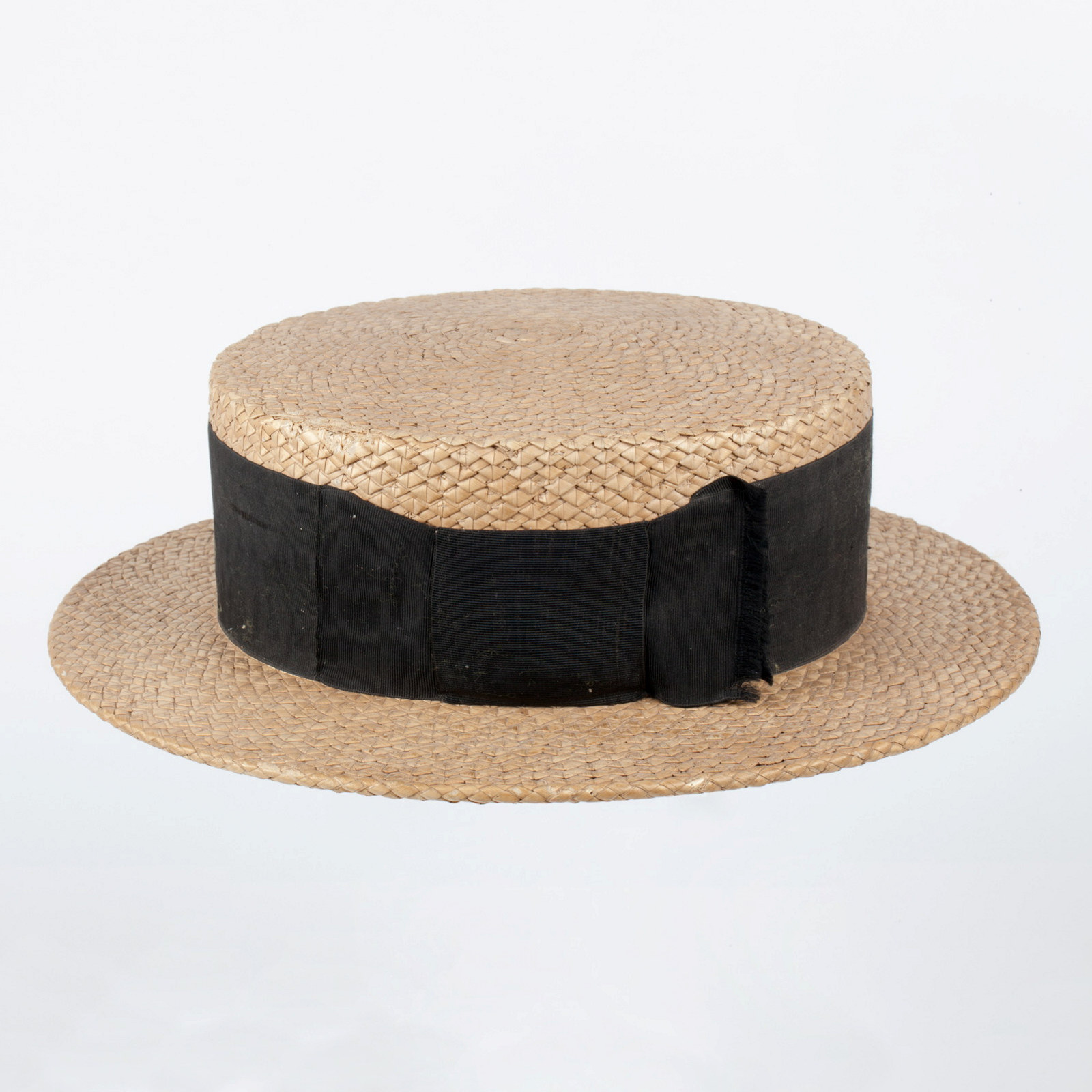
Kathleen’s straw boater
This hat, a ‘boater’ or ‘ladies’ sailor hat’, is made from finely plaited straw and dressed with a black faille ribbon. A padded silk label sewn into the crown of the hat reveals that is was manufactured for G. H. Smith & Son of George Street, Sydney, ‘sole agents’ for Henry Heath, hat manufacturer of Oxford Street, London. The inner band is impressed with the words ‘straw hat made in England’. The boater traces its origins to the flat-topped caps of French sailors but by the second half of the nineteenth century had come to signify the leisured lifestyle of English gentlemen - light, comfortable and cool, the ideal headwear for tennis, picnicking or boating. It was a style that became popular with women in the 1880s and 1890s and marked a new social informality and freedom in women’s dress. In March 1891 G.H. Smith & Son placed an advertisement in Louisa Lawson’s radical women’s newspaper The Dawn illustrated with a sketch of a woman wearing a boater. Perhaps not surprisingly, this boater belonged to Kathleen Rouse (1878-1932) of Rouse Hill House, a progressive young woman who had little interest in activities deemed appropriate for the female sex and who much preferred travel and intellectual pursuits.
Robert Taylor Thorburn’s silk hat
This silk plush top hat belonged to Robert Taylor (Bob) Thorburn (1847-1934), an entrepreneurial Nowra businessman who in 1885-1886 financed the building of Meroogal, the picturesque timber house in Worrigee Street, Nowra, that was the home of his widowed mother Jessie Catherine Thorburn and his unmarried sisters Belle, Georgie, Kate and Tot. The hat was bought from the Sydney department store David Jones, made by Lincoln Bennett & Co of Sackville Street, Piccadilly, London, a company renowned for covering “more aristocratic crowned heads in their time than any other firm in the world”. It was a hat for special, formal, occasions and may have been bought by Bob Thorburn to wear at his wedding to Jessie Billis in April 1886. As the price marked on the box shows, he paid 25 shillings for the privilege.
The Fedora
This portrait of a fedora balanced on top of boxes of photographic negatives is reproduced from one of many thousands of glass-plate images contained within an archive of forensic photography created by the New South Wales Police between 1912 and 1964 and now held at the Justice & Police Museum in Sydney. The fedora, a soft hat with a crease down the centre, was very popular in Sydney during the 1920s and features in several of the images within the archive. It was police practice to photograph suspects as they would appear in public – with their hat on – to make identification easier for police walking the beat. Many of the suspects and criminals photographed by police at Central police station at that time are shown wearing fedoras. Detectives also wore this kind of hat as evidenced by pictures of police photographers wearing fedoras at crime scenes. The hat on the boxes, with its sweat-stained hatband, may have been evidence for a prosecution or was perhaps simply owned by a police photographer playing around with a camera.
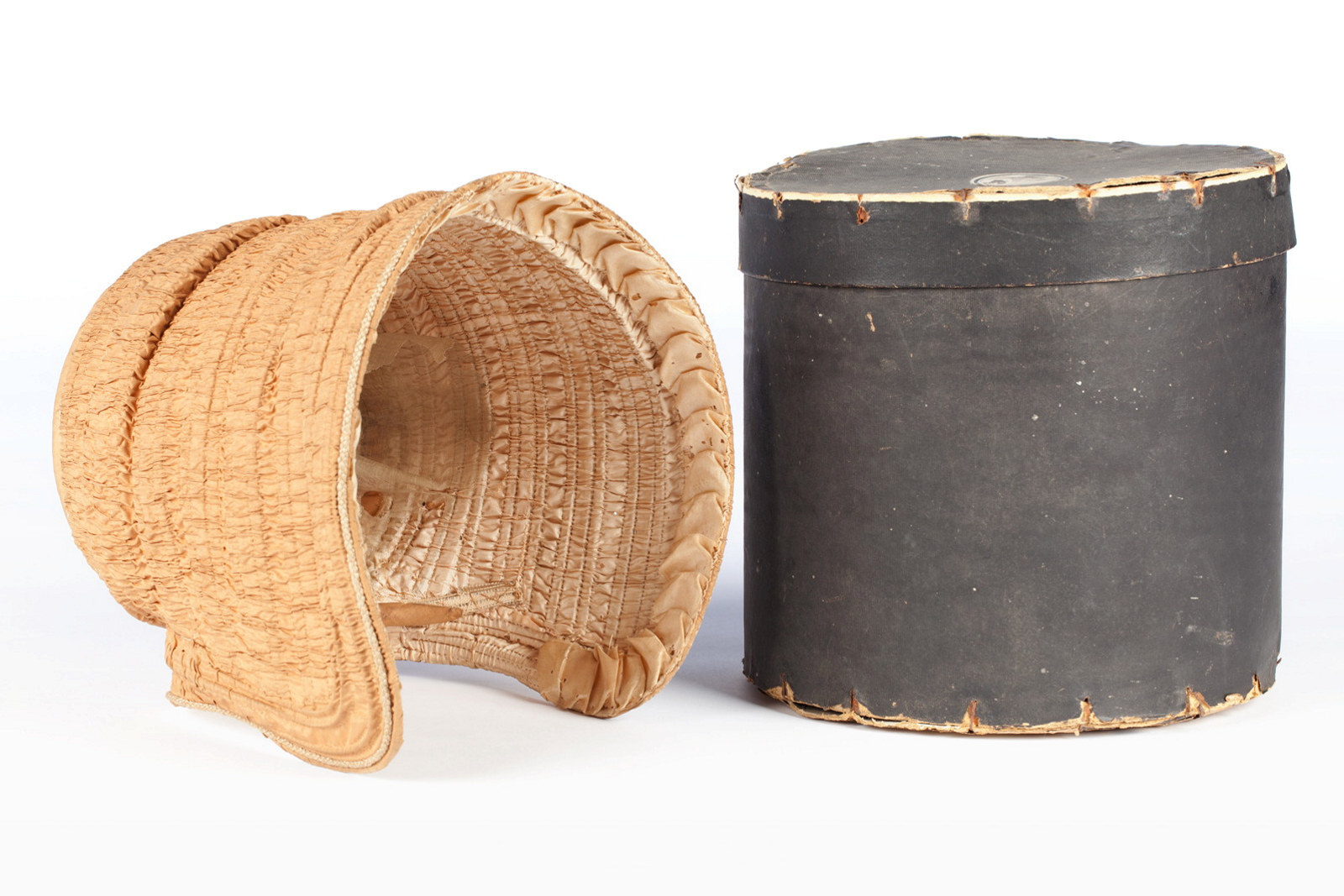
The Heritage family bonnet
This is an example of a drawn bonnet, a bonnet where fine fabric is ruched - or drawn - over a series of supports, usually cane or whalebone hoops. In this case the supports are strips of card and the fabric is bronze silk. The bonnet is also framed with silk-covered wire to hold its shape and piped with silk cording. This is the bonnet in an undressed state, ready to be trimmed for a new season: the brim extended perhaps with silk net or lace; a matching bavolet - a ruffle - applied to the back of the bonnet to cover the neck; and wide silk ribbons added at the sides to fasten the finished confection under the chin. The bonnet is provenanced to the family of James Edgar Heritage (1880-1957) C.M.G., of Launceston, Tasmania. Heritage was a well-known figure in Tasmanian legal circles and his mother’s family, the Hadfields, was also long-established in Launceston. His maternal grandmother, Catherine Coglin, was a milliner and may have made and worn this bonnet for her marriage to James Smith Hadfield in May 1850.
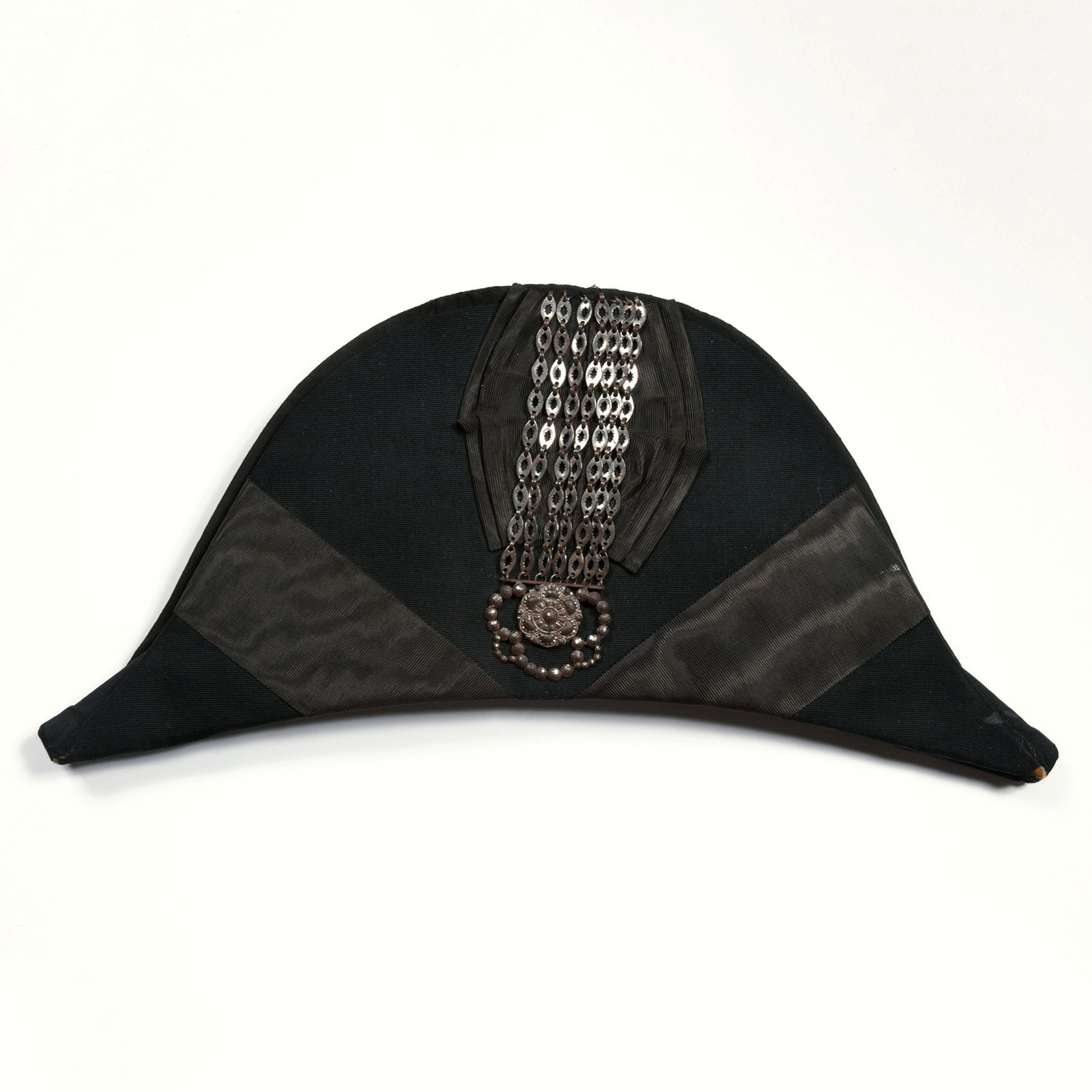
William Wentworth’s bicorne
This bicorne – literally ‘two-horned’ ̶ hat was part of a court suit made for Australian politician William Charles Wentworth (1790-1872) while he was on an extended visit to England and Europe in 1854-1861. Wentworth’s activities during this time included a sustained campaign of lobbying to secure the introduction into the British Parliament of a new Constitution Bill which would provide full responsible government for the colony of New South Wales. The NSW Constitution Act received Royal Assent in July 1855. It is presumed that it was in connection with his lobbying while in London that Wentworth commissioned the court suit since it conforms to Royal protocol of that period. It comprises a silk-lined tailcoat of fine wool, knee breeches worn with silk stockings, an embroidered waist-coat of cream silk, as well as the hat. Wentworth’s bicorne is of black silk decorated with marcasite and cut steel, and was designed to be folded flat, so that it could be conveniently tucked under the arm when not being worn.
Related
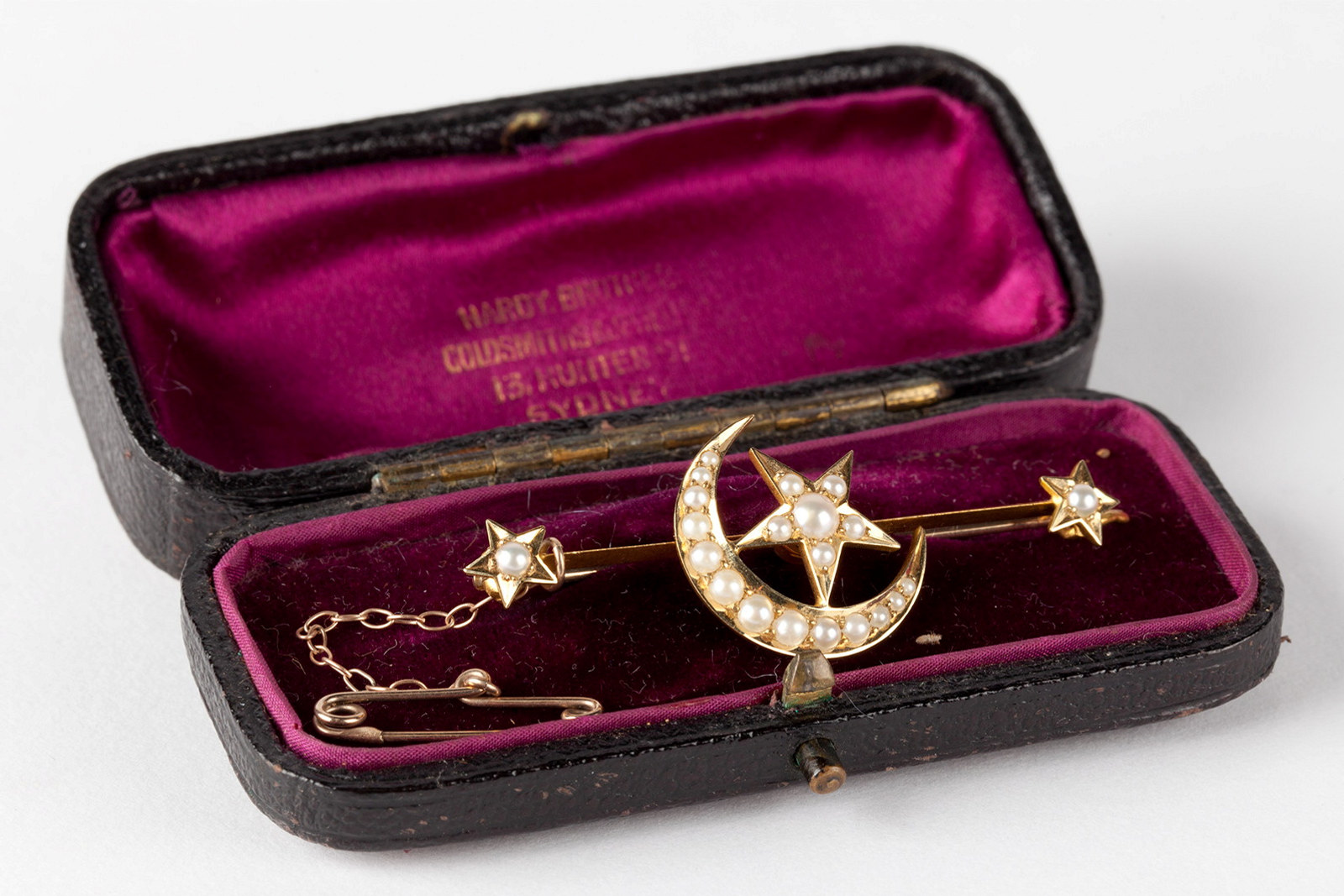
Baubles, brooches & beads
We wear jewellery as articles of dress and fashion and for sentimental reasons – as tokens of love, as symbols of mourning, as souvenirs of travel
Published on